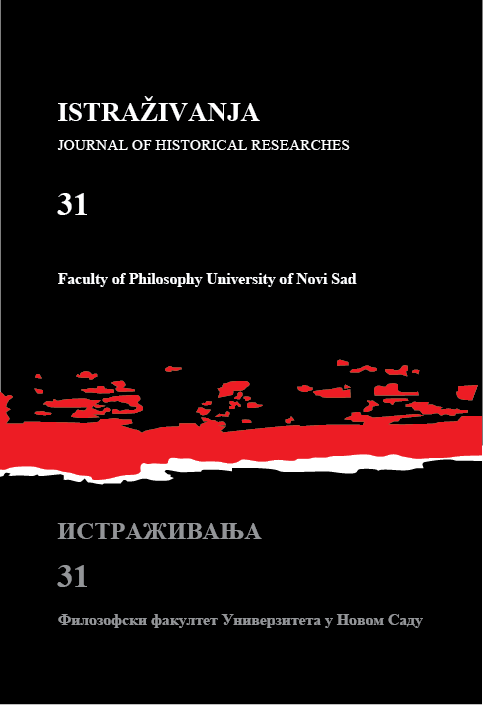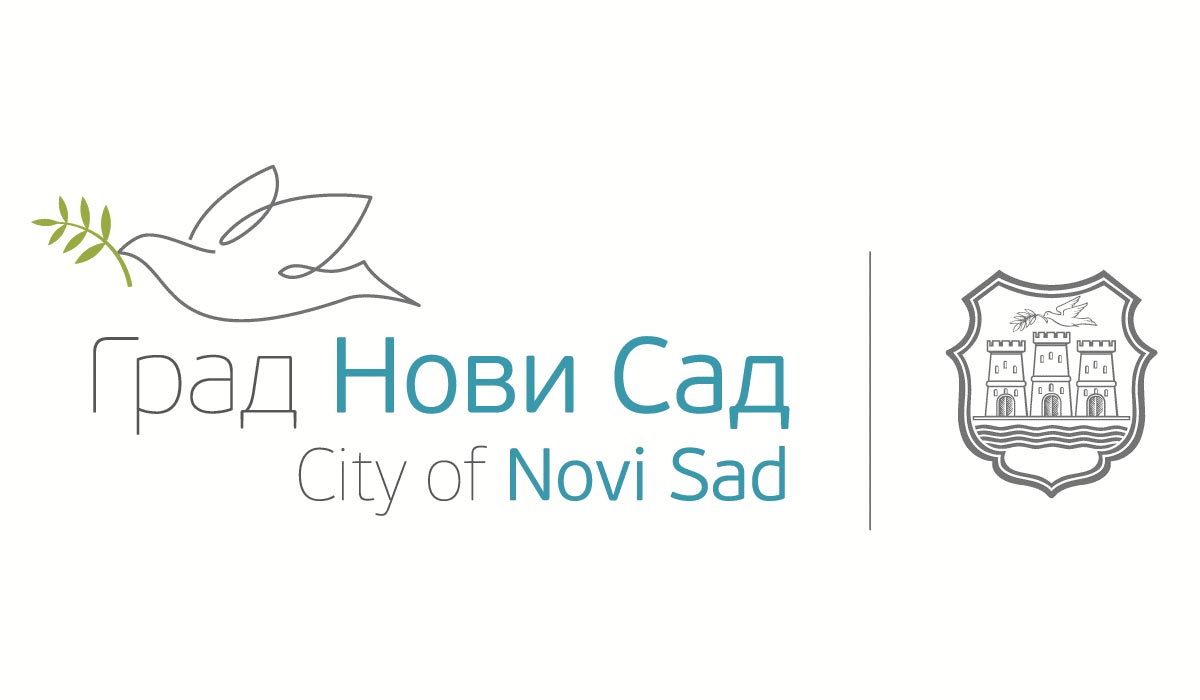REGES, REGULI, DUCES: SOME REMARKS ON THE INDIVIDUAL AND POWER IN LATE IRON AGE PRE-ROMAN BRITAIN
DOI:
https://doi.org/10.19090/i.2020.31.78-92Keywords:
Iron Age kings, Pre-Roman Britain, rex, Caratacus, Togidubnus, kingshipAbstract
The paper considers one of the most significant changes in late pre-Roman Iron Age in Britain—the emergence of individual power, usually labeled as kingship. The modern perception of this sociopolitical phenomenon has been largely determined according to texts from Greek and Roman authors. This paper argues that this image is distorted and says more about the ancient writers than it does about ancient political leaders, their status, or the essence of their power. Avoiding terms like king to prevent a general misunderstanding of the phenomenon is reasonable; nevertheless, coins from so-called dynasties and tribes as well as other material sources show the emergence of individual power from the first century B.C.E. to the first century C.E. This new phenomenon should be analyzed with new (and re-worked) theoretical frameworks. Additionally, comparative studies can play a significant role in exploring the nature of what is referred to as Iron Age kingship in Britain.
Downloads
References
Braund, D. Rome and the Friendly King: The Character of the Client Kingship, London: Croom Helm / New York: St. Martin’s P., 1984.
______. Ruling Roman Britain: Kings, Queens, Governors and Emperors from Julius Caesar to Agricola, London: Routledge, 1996.
Byrne, F.J. Irish Kings and High Kings, London: Batsford, 1973.
Champion, T. ‘Britain before the Romans’, in M. Millett, L. Revell & A. Moore (eds.), The Oxford Handbook of Roman Britain, Oxford: Oxford U. P., 2016, 150–178.
______. ‘Medieval Archaeology and the Tyranny of Historical Record’, in D. Austin & L. Alcock (eds.), From the Baltic to the Black Sea: Studies in Medieval Archaeology, London: Unwin Hyman, 1990, 79–95.
Coates, R. ‘Cogidubnus Revisited’, The Antiquaries Journal, 85, 2005, 359–366.
Collis, J. ‘The Polities of Gaul, Britain, and Ireland in the Late Iron Age’, in C. Haselgrove & T. Moore (eds.), The Later Iron Age in Britain and Beyond, Oxford: Oxbow Books, 2007, 523–528.
Collis, J., Karl, R. ‘Politics and power’, in C. Haselgrove, K. Rebay-Salisbury, P.S. Wells, The Oxford Handbook of the European Iron Age, Oxford: Oxford U.P. (forthcoming).
Cottam, E., de Jersey, P., Rudd, C., Sills, J. Ancient British Coins. London: Spink and Son Limited, 2010.
Creighton, J. Britannia: The Creation of A Roman Province, London: Routledge, 2006.
______. Coins and Power in Late Iron Age Britain, Cambridge: Cambridge U. P., 2000.
______. ‘Herod’s Contemporaries in Britain and the West’, in D. M. Jacobson & N. Kokkinos (eds.), Herod and Augustus: Papers held at the U.S. Conference 21st – 23rd June 2005, Leiden: Brill, 2009, 361–381.
Creighton, J. ‘Review: Burning Kings’, Britannia, 32, 2001, 401–404.
Crummy, P. Stanway: An Elite Burial Site at Camulodunum, London: Britannia Monographs 24, 2007.
Crumley, C.L. ‘A Dialectical Critique of Hierarchy’, in T. C. Patterson & C.W. Gailey (eds.), Power Relations and State Formation, Washington, D.C.: American Anthropological Association, 1987, 155–169.
______. ‘Heterarchy and the Analysis of Complex Societies’, Archaeological Papers of American Anthropological Association, 6(1), 1995, 1–5.
______. ‘Communication, Holism and the Evolution of Sociopolitical Complexity’, in T. Haas (ed.), From Leaders to Rulers, New York: Kluwer Academic/Plenum Publishers, 2000, 19–33.
Fitzpatrick, A. ‘The Fire, the Feast and the Funeral: Late Iron Age Mortuary Practices in South-East England’, in V. Kruta & G. Leman-Delerive (eds.), Feux des morts, foyers des vivants. Les rites et symboles du feu dans les tombes de l'Âge du Fer et de l'époque romaine, Lille: Revue de Nord Hors série. Collection Art et Archéologie xi), 123–142.
Foster, J. The Lexden Tumulus: A Re-Appraisal of an Iron Age Burial from Colchsester, Essex, Oxford: BAR British Series 56, 1986.
Garcia Quintela, M.V. ‘Celtic Elements in Northwestern Spain in Pre-Roman Times’, e-Keltoi, 6, 2005, 467–569.
Garland, N.J. Territorial Oppida and the Transformation of Landscape and Society in South-Eastern Britain from BC 300 to 100 AD, Unpublished PhD Thesis, University College London, 2017.
______. ‘The Origins of British Oppida: Understanding Transformation in Iron Age Practice and Society’, Oxford Journal of Archaeology, 39(1), 2020, 107−125.
Gibson, D.B. ‘Celtic Democracy: Appreciating the Role Played by Alliances and Elections in Celtic Political Systems, Proceedings of the Harvard Celtic Colloquium, 28, 2008, 40–62.
Going, A. ‘Tacitus and the Client Kings’, Transactions of American Philological Association, 120, 1990, 315–331.
Haas, J. (ed.), From Leaders to Rulers, New York: Kluwer Academic/Plenum Publishers, 2000.
Harding, D.W. Death and Burial in Iron Age Britain, Oxford: Oxford U. P., 2016.
Haselgrove, C. Iron Age Coinage in South-East England: The Archaeological Context, Oxford: BAR British Series 174, 1987.
______. ‘Society and Polity in Late Iron Age Britain’ in M. Todd (ed.), A Companion to Roman Britain, Oxford: Blackwell with The Historical Association, 2004, 12–29.
______. Cartimandua’s Capital? The Late Iron Age Royal Site at Stanwick, North Yorkshire, Fieldwork and Analysis, 1981–2011, Oxford: Oxbow Books, 2016.
Haselgrove, C., Moore, T. ‘New Narratives of the Later Iron Age’, in C. Haselgrove and T. Moore (eds.), The Later Iron Age in Britain and Beyond. Oxford: Oxbow Books, 2007, 1–15.
______. (eds.). The Later Iron Age in Britain and Beyond, Oxford: Oxbow Books, 2007.
Hill, J.D. ‘The Dynamics of Social Change in Later Iron Age Eastern and South-Eastern England, c. 300 B.C. – A.D. 43’, in C. Haselgrove and T. Moore (eds.), The Later Iron Age in Britain and Beyond. Oxford: Oxbow Books, 2007, 16–41.
______. ‘How did British Middle and Late Pre-Roman Iron Age Societies Work (if They Did)’ in T. Moore and X.L. Armada (eds,), Atlantic Europe in the First Millenium BC, Crossing the Divide, Oxford: Oxford U.P., 2012, 242–263.
Hoffmann, B. The Roman Invasion of Britain. Archaeology versus History. Barnsley: Pen and Sword Books, 2013.
Khazanov, A. ‘“Military Democracy” and the Epoch of Class Formation’, in Yu. Bromley (ed.), Soviet Ethnology and Anthropology Today, The Hague: Mouton, 1974, 133–146.
Lamb, A. Late Iron Age Mortuary Rites in Southern Britain: socio-political significance and insular and continental contexts, Unpublished PhD thesis, University of Leicester, 2018.
Lamb, A. ‘The Rise of the Individual in Late Iron Age Southern Britain and Beyond’, Chronika, 6, 2016, 26–40.
Leins, I. ‘Anarevito: Political Fluidity in southern Britain in the late Iron Age’, in R. Bland and D. Calomino (eds.), Studies in Ancient Coinage in Honour of Andrew Burnett, London: Spink and Son Limited, 2015, 109¬¬−118.
______. Numismatic Data Reconsidered: Coin Distributions and Interpretation in studies of late Iron Age Britain, Unpublished PhD Thesis, University of Newcastle, 2012.
Mattingly, D. An Imperial Possession: Britain in the Roman Empire. London: Penguin, 2007.
______. Imperialism, Power and Identity: Experiencing the Roman Empire. Princeton: Princeton U. P., 2011.
Mays, M. ‘Inscriptions on Celtic Coins’, Numismatic Chronicle, 153, 1992, 57–82.
Moore, T. ‘Detribalizing the Later Prehistoric Past: The Concepts of Tribes in Iron Age and Roman Studies’, Journal of Social Archaeology, 11, 2011, 334–60.
Mutschler, F.-H. Erzählstil und Propaganda in Caesars Kommentarien, Heidelberg: Universitätsverlag Winter GmbH Heidelberg, 1975.
Murgia, C.E. ‘The Minor Works of Tacitus: A Study in Textual Criticism’, Classical Philology, 72 (4), 1977, 323–343.
Nash Briggs, D. ‘The Language of Inscriptions on Icenian Coinage’, in J. A. Davies (ed.), The Iron Age in Northern East Anglia: New Work in the Land of the Iceni, Oxford: BAR British Series 549, 2011, 83–102.
Niblett, R. ‘The Native Elite and their Funerary Practices from the First Century B.C. to Nero’, in M. Todd (ed.), A Companion to Roman Britain, Oxford: Blackwell with The Historical Association, 2004, 30–41.
______. The Excavation of a Ceremonial Site at Folly Lane, Verulamium, London: Britannia Monographs 14, 1999.
Pitts, M. ‘Reconsidering Britain’s First Urban Сommunities’, JRA, 27, 2014, 133–173.
______. ‘Re-thinking the Southern British Oppida: Networks, Kingdoms and Material Culture’, European Journal of Archaeology, 13(1), 2010, 32–63.
Randsborg, K. Roman Reflections: Iron Age to Viking Age in Northern Europe, London: Bloomsbury Academic, 2015.
Rambaud, M. L’art de la deformation historique dans les Commentaries de Cesar, Paris: Les Belles-Lettres, 19662.
Stead, I.M. ‘A La Tène III Burial at Welwyn Garden City’, Archaeologia, 101, 1967, 1–63.
Stewart, C.N. ‘Inventing Britain: The Roman Creation and Adaptation of Image’, Britannia, 26, 1995, 1–10.
Talbot, J. Made for Trade. A New View of Icenian Coinage, Oxford: Oxbow Books, 2017.
Thurston, T. ‘Bitter Arrows and Generous Gifts: What Was a ‘King’ in the European Iron Age?’, in T. D. Price and G. M. Feinman (eds.), Pathways to Power: New Perspectives on the Emergence of Social Inequality, New York: Springer, 2010, 193–254.
______. Landscapes of Power, Landscapes of Conflict: State Formation in the South Scandinavian Iron Age, New York: Kluwer Academic, 2002.
Van Arsdell, R.D. Celtic Coinage of Britain, London: Spink, 1989.
Williams, J. ‘Coin Inscriptions and the Origins of Writing in pre-Roman Britain’, British Numismatic Journal, 71, 2001, 1–17.














